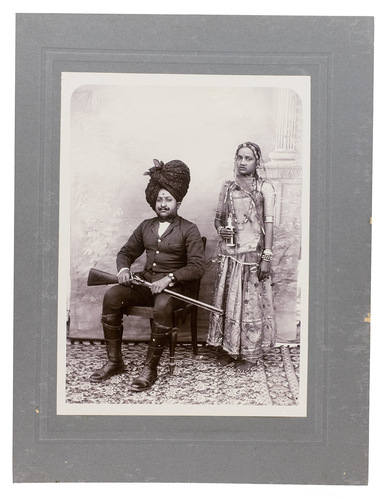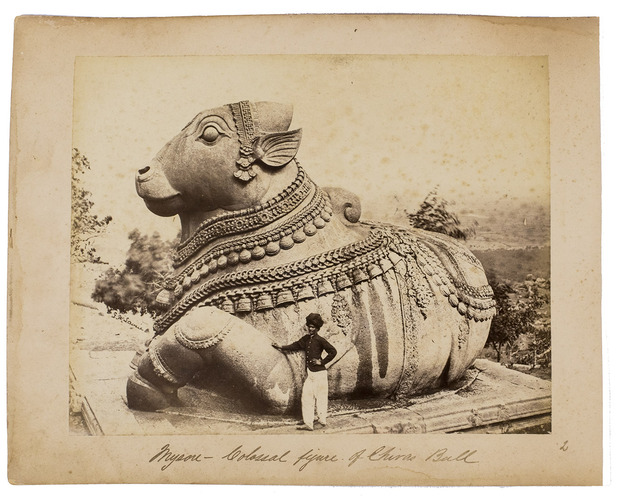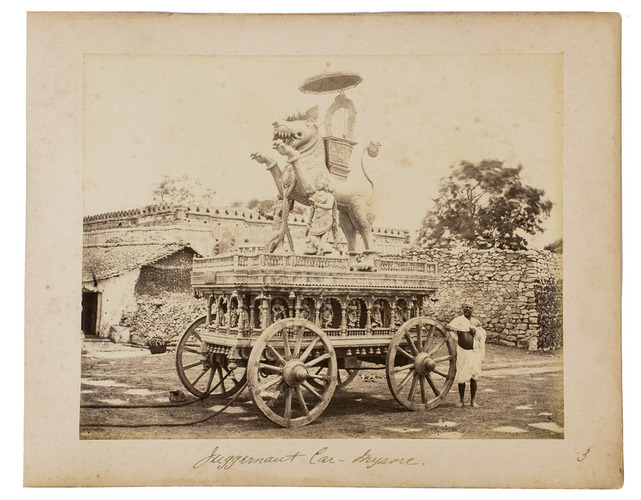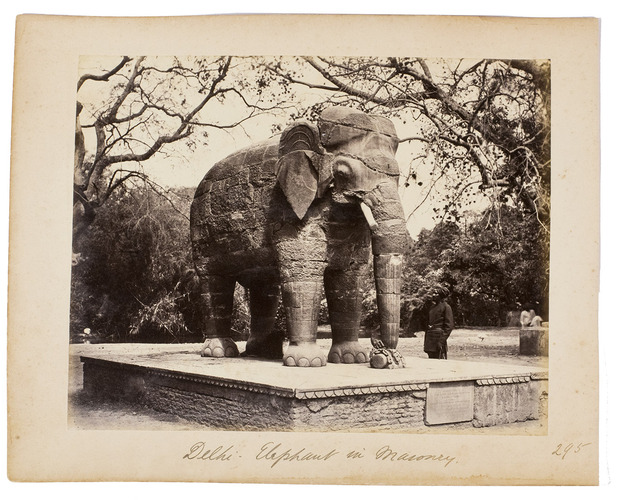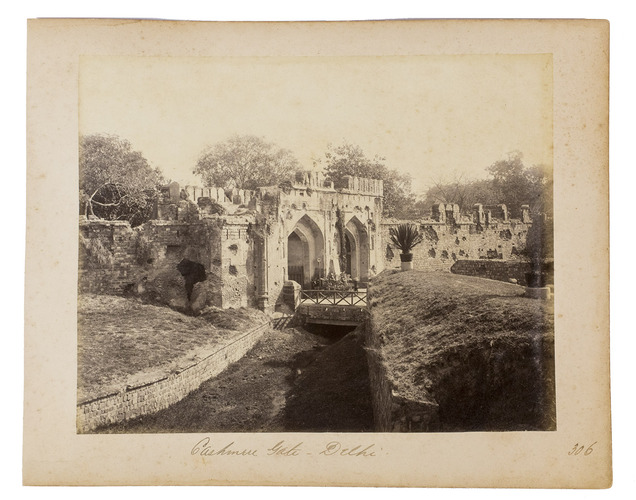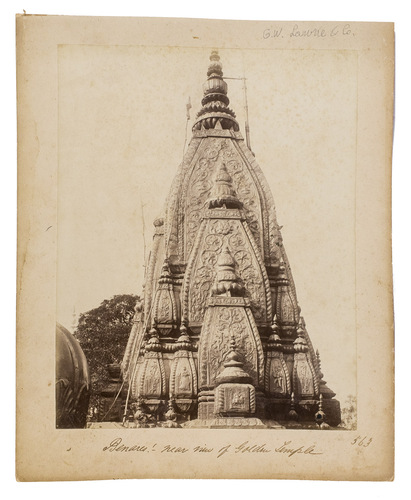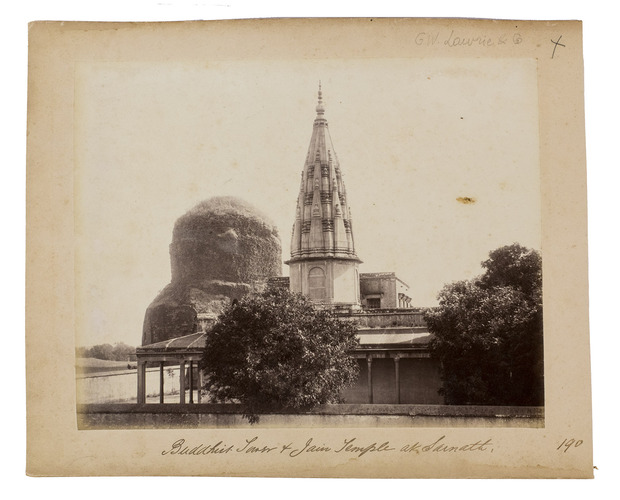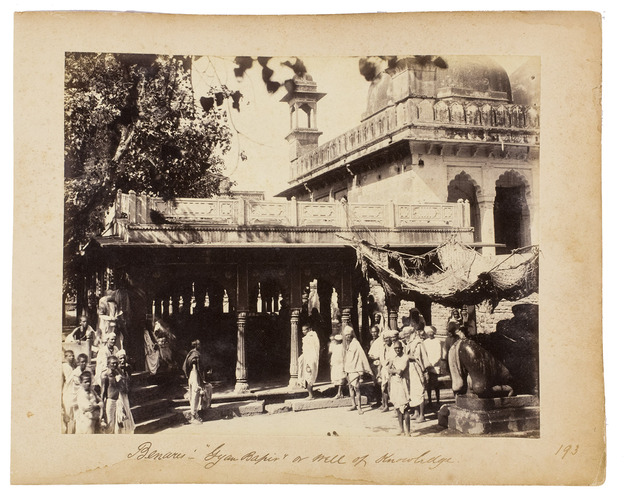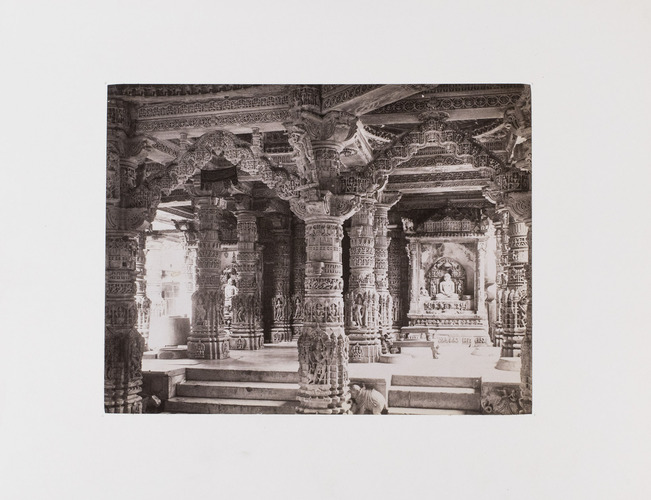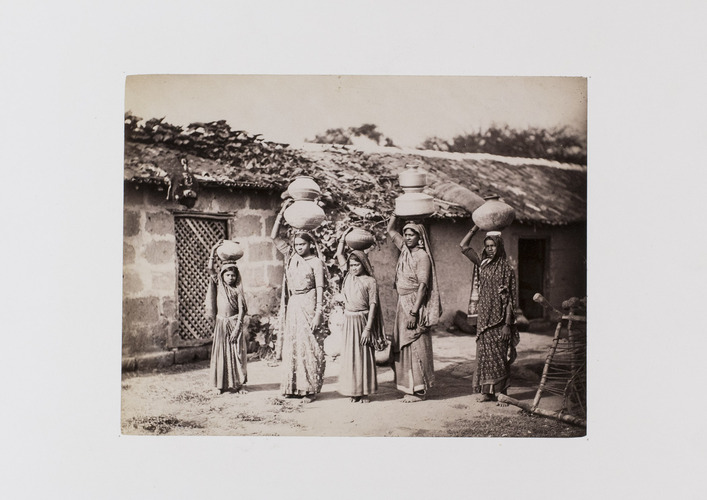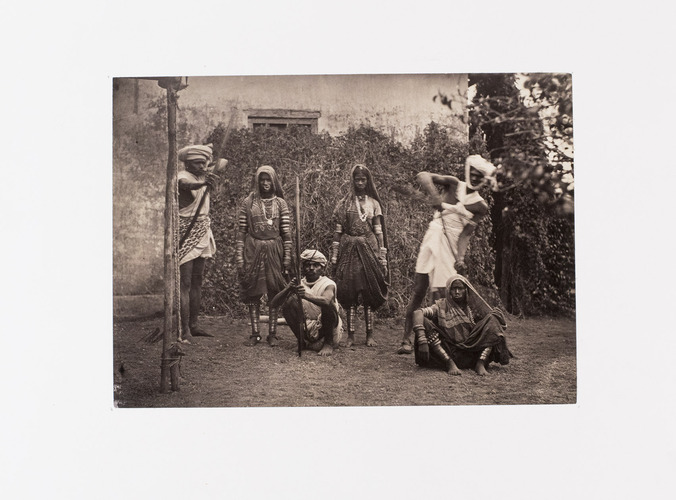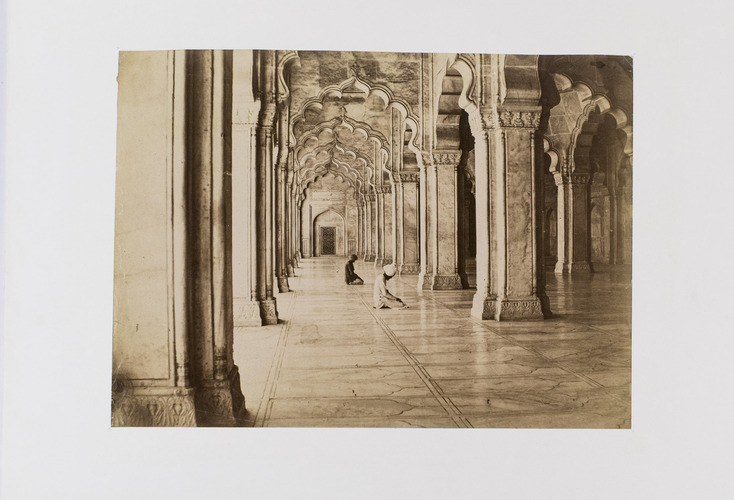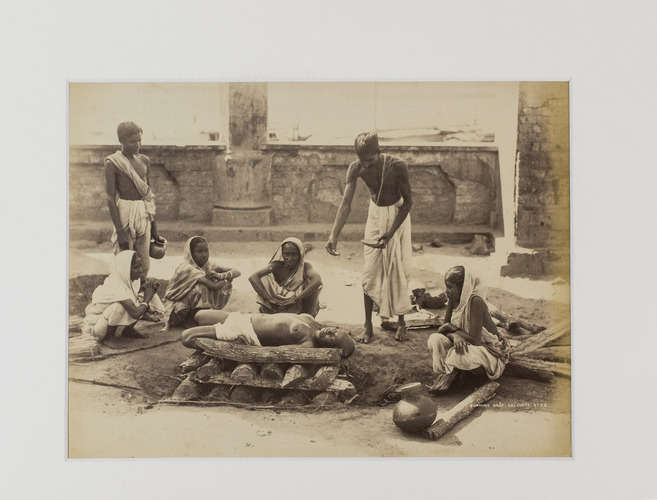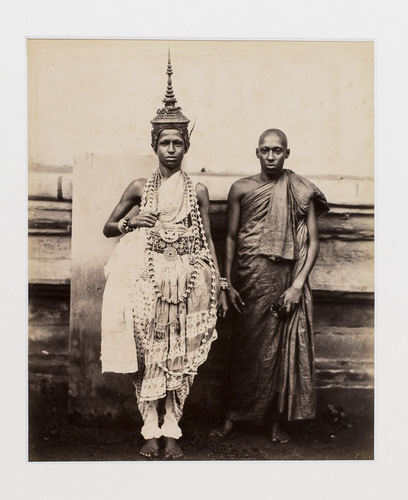[INDIA - PHOTOGRAPHY]. [G.W. LAWRIE & Co.; Francis FRITH & Co. W.L.H. Skeen & Co. (photographers)].
[Collection of photographs of India].
[India], ca. 1880s-1890s. Photographs ca. 20 x 27 cm; boards ca. 34 x 27 cm. 80 albumen print photographs mounted on 56 boards, the majority with manuscript captions below the photographs. The photographs are mounted on paper boards, sometimes displayed in passe-partouts and kept in a blue-ish grey cardboard box and a large half red cloth and red and black decorated paper sides portfolio with red ties. A detailed list of contents is available upon request.
€ 28,000
Large collection of photographs showing views of India. The majority of these photographs are of religious and other notable buildings in Delhi and major sites and cities in Uttar Pradesh, such as Benares (now Varanasi) and Agra in Uttar Pradesh, but also in the states Karnataka (Mysore), West-Bengal (Calcutta), Gujarat (Ahmedabad), and Tamil Nadu (Madras) and even Ceylon (now Sri Lanka). This collection gives a wonderful impression of the most important and most attractive sites in these regions of India at the end of the 19th century.
Many of the photographs can be attributed to prominent late 19th- and early 20th-century photography studios in India, such as G.W. Lawrie & Co. and F. Frith. While only two photographs - of the stone bull and the juggernaut car in Mysore, Karnataka - are signed in the negative by Lawrie, many others have been attributed to this studio in the manuscript captions. The captions even mention the corresponding numbers of the albumen print photos which were commercially available to be collected and presented in albums or collections such as the present one. G.W. Lawrie was a Scottish photographer working in Lucknow, the capital of the state Uttar Pradesh in India, in 1880s and 1890s. Another photograph, showing a tomb in Delhi, is accompanied by a small label of Frith's photo-pictures, universal series. Frith (1822-1898) was an English photographer and founder of F. Frith and Co., a studio mainly known for publishing photos of the Middle East and the United Kingdom (then also including India).
Some of the more notable sites and buildings appearing in the photographs are: the Qutb, including the Qutb Minar, the Red Fort, and Jama Masjid (or Masjid-i-Jehan-Numa, one of the largest mosques in India) in Delhi; the Taj Mahal, Red Fort, and Moti Masjid mosque in Agra; and the Golden Temple and surroundings, and the Durga Kund Mandir temple in Benares (Varanasi). Other photographs give an insight in the Indian culture surrounding religion and death as they show the Ghats along the Ganges river near Benares and a Ghat in Calcutta. Ghat is a term used in the Indian subcontinent which could, depending on the context, refer to a range of stepped hills with valleys or the series of steps leading down to a body of water or wharf. In this case the word specifically refers to the steps leading down to the different bathing and cremation places along the banks of the Ganges. The Ghats in Varanasi - 84 in total, the majority of which were rebuilt in the 18th century - are among the most important and famous ghats in India. Most of the ghats are bathing and puja ceremonial ghats (a worship ritual performed by Hindus, Buddhists and Jains to offer devotional homage and prayer to one or more deities, to host and honour a guest, or to spiritually celebrate an event), while two ghats - Manikarnika (pictured in this collection) and Harishchandra - are used exclusively as cremation sites.
Almost all photographs have manuscript captions, contemporary with later additions, below the image or on the verso of the boards. The photographs and the contemporary boards are somewhat foxed and browned, but the images remain clear. Overall in good condition.
Related Subjects:














